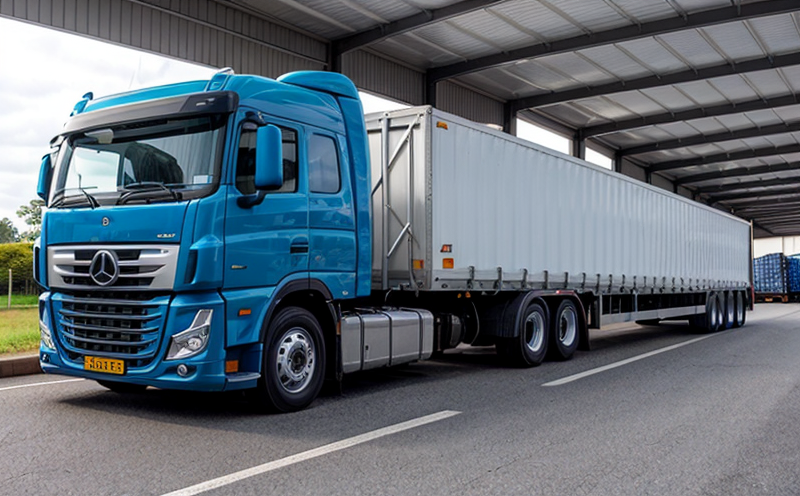EN 1317 Road Restraint System Safety Testing for Export and Trade
The European standard EN 1317 specifies the requirements for road restraint systems intended to protect vehicles in case of a collision. These systems are critical components in ensuring public safety on roads across Europe, particularly when it comes to imported or exported goods that must meet stringent safety regulations.
For manufacturers and exporters dealing with international trade, compliance with EN 1317 is essential for the successful export of road restraint systems. The standard addresses various aspects including design requirements, material properties, installation procedures, and performance criteria. Compliance ensures that these systems are robust enough to protect vehicles during potential collisions while also meeting safety standards in different countries.
The testing process involves several stages aimed at evaluating both static and dynamic characteristics of the restraint system. Static tests focus on assessing structural integrity under typical environmental conditions, whereas dynamic tests simulate real-world collision scenarios to evaluate performance under stress. This dual approach ensures comprehensive validation before products are allowed into markets governed by this standard.
Given that many countries have adopted or are in the process of adopting EN 1317 as a mandatory requirement for road restraint systems entering their borders, compliance can significantly impact your business operations. Non-compliance may result in product rejections at customs checkpoints and delays in delivery schedules, which could lead to financial losses and reputational damage.
Our laboratory offers comprehensive services tailored specifically towards EN 1317 compliance testing for road restraint systems destined for export or trade within European Union member states and associated countries. Our state-of-the-art facilities allow us to simulate various environmental conditions accurately, providing reliable data that supports informed decision-making processes related to product design and manufacturing.
Our team of experienced professionals specializes in conducting all types of tests prescribed by EN 1317, ensuring thorough evaluation of each aspect covered by this standard. With our expertise combined with advanced testing equipment, we deliver accurate results within agreed timelines, helping ensure smooth compliance processes for our clients.
Why It Matters
The importance of meeting EN 1317 standards cannot be overstated when it comes to exporting road restraint systems. Not only does non-compliance risk significant delays and potential rejections at border checkpoints, but there are also broader implications for brand reputation and market access.
- Meeting local regulations ensures smoother entry into target markets
- Avoids costly returns or recalls of products that fail to meet safety standards
- Promotes trust among customers who expect high-quality products from reputable suppliers
- Facilitates easier negotiation of trade agreements and reduces compliance costs over time
In today's globalized economy, where competition is fierce and consumer expectations are high, ensuring adherence to international standards like EN 1317 becomes a strategic advantage. By demonstrating commitment to safety and quality through rigorous testing according to these guidelines, companies can enhance their competitive position both domestically and internationally.
Applied Standards
| Standard | Description |
|---|---|
| EN 1317-1:2006+A1:2011 | General requirements for road restraint systems. |
| EN 1317-2:2006+A1:2011 | Design and installation of road restraint systems on motorways and multi-lane roads. |
| EN 1317-3:2006+A1:2011 | Testing methods for road restraint systems. |
The EN 1317 series of standards provides a comprehensive framework that addresses the various aspects necessary to ensure the safety and effectiveness of road restraint systems. Compliance with these specifications is crucial not only for meeting regulatory requirements but also for protecting brand integrity and fostering trust among consumers.
Competitive Advantage and Market Impact
- First-to-market compliance can open up new export opportunities
- Demonstrating rigorous testing enhances customer confidence in product quality
- Reduces the likelihood of costly rework or recalls due to non-compliance issues
- Improves operational efficiency by minimizing delays at border checkpoints
- Paves the way for future expansions into additional markets requiring similar standards
Compliance with EN 1317 is not just about meeting regulatory requirements; it's also an investment in long-term business sustainability. By prioritizing adherence to these international standards, companies position themselves favorably against competitors who may still be struggling to meet such stringent criteria.





